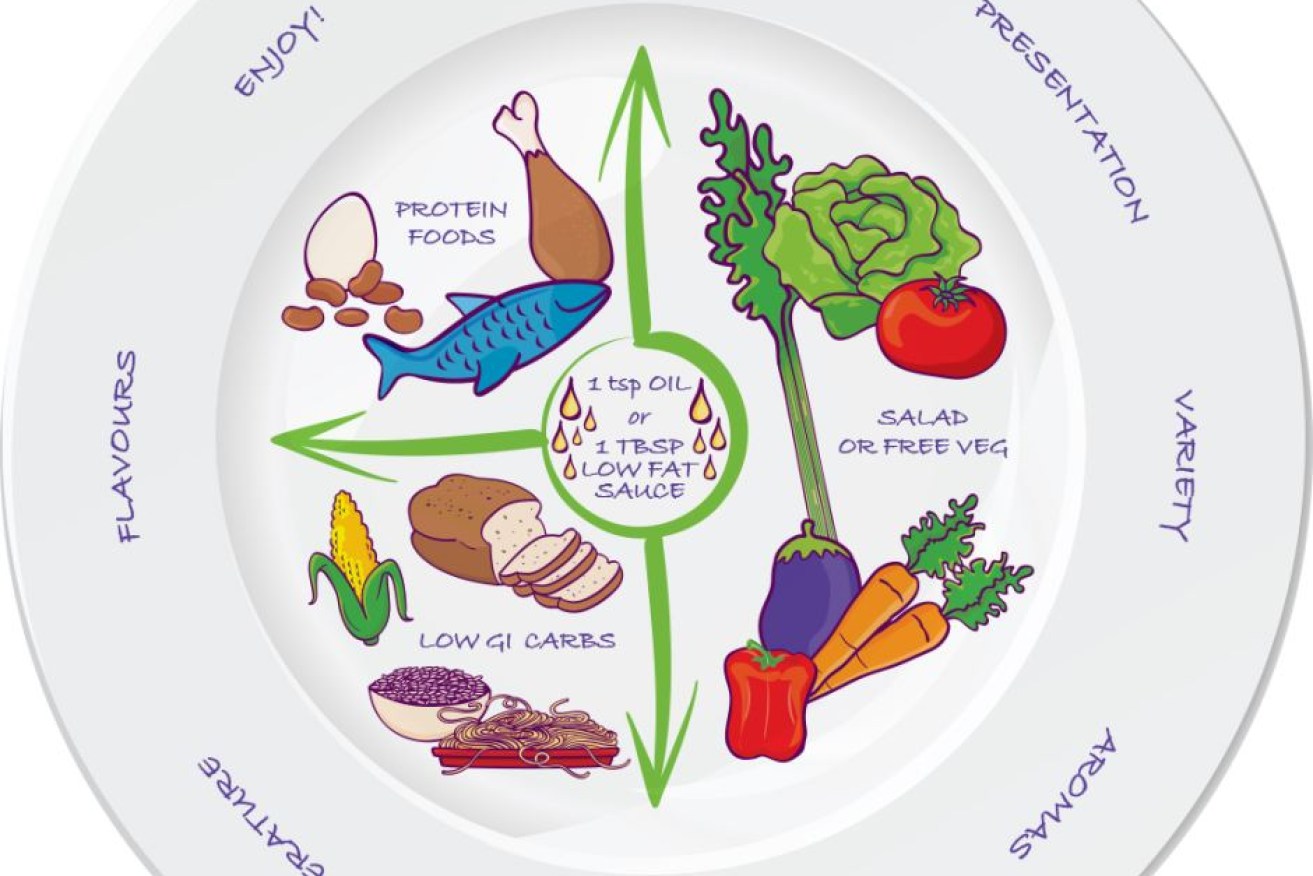Correct portion sizes and planning your grocery trips key to avoiding food waste

Keep food inside the base of the plate to lose weight. Photo: Amanda Clark
Australians are overbuying, overcooking and overeating, which is leading to high volumes of food waste and increasing waistlines, dietitians and chefs have warned.
Every year households throw out 345 kilograms of food — the equivalent of about three full fridges — while individuals discard up to 20 per cent of their purchased food, according to NSW Government data.
Part of the reason was poor planning when grocery shopping and also not eating the correct food portions, explained Amanda Clark, who is an advanced accredited practising dietitian and spokeswoman for the Dietitians Association of Australia (DAA).
“Plan your menu,” she said. “That helps from a weight control perspective and helps from a financial perspective, and definitely helps with food wastage because if you plan, you only buy what you intend to eat.”
The DAA recommends these portions for a main meal:
- Half your plate: Vegetables with good variety and colour
- Quarter of your plate: Carbohydrates such as potato, wholegrain pasta, brown rice, couscous, quinoa
- Quarter of your plate: Lean protein, like lean meat, poultry, eggs or legumes
For women trying to lose weight, the food should fill the base of a standard dinner plate, while to maintain your weight or if you are a man trying to lose weight, the food can extend half way out to the plate border.
Men aiming to maintain weight have varying energy needs, so serving sizes may be bigger again with an additional piece of fruit or yoghurt, Ms Clark said.
How to shop and not overbuy
Planning your week’s meal and checking the pantry before heading to the shops will save you from buying too much, Ms Clark said.
“For example, the fruit bowl — a lot of households fill up the fruit bowl on shopping day and throw it out when the next batch comes in on the next shopping day,” she said.
“And that’s because they didn’t have an intention on when they were going to eat the fruit.
“If you just go and are influenced by what you see, you’ll buy a mishmash of things that don’t necessarily go together and will just end up flopsy in the fridge and eventually thrown away.”
Tom Rutledge, 2011 MasterChef Australia contestant and founder of food delivery company HelloFresh Australia, said the amount of food being wasted across the country was “alarming”.
“There’s waste that occurs in all parts of the supply chain,” he said.
“There’s waste in foods that never make it to market because buyers have specifications because of consumer expectations, there’s food and ingredients that get wasted at the retail stage because they’re bought speculatively and not sold, and there’s food wasted in consumers’ households because they buy food without an intended purpose.”
What about food packaging?
Mr Rutledge said his company aimed for zero food waste, as every box of ingredients delivered was pre-measured so the consumer was cooking exactly what they needed.
A family of four, for example, might receive a 400-gram packet of rice, a tray of chicken with four to five fillets, one broccoli, one red onion, half a sachet of paprika or oregano and half a tub of Dijon mustard.
But while the set ingredients ensure there is little food wastage, there is also a significant amount of packaging.
A delivery including pumpkin, for example, had the cut pieces wrapped in tight plastic, each condiment had its own packet, the meat came in a standard plastic tray and a three-quarter cup of rice for two was also packaged.

Mr Rutledge says oversupply in supermarkets adds to food waste. Photo: ABC
“It’s something we’re sensitive to and we don’t use more packaging than we need to,” Mr Rutledge said.
“The packaging material we do is fully biodegradable, we moved to PLA (polylactide) based plastic packaging and the boxes are made from recycled board and the insulation material is made from a vegetable-based fibre.”
Ms Clark supported food delivery companies that controlled portion sizes for their clients, but acknowledged that extra packaging was an issue across the industry and general retail market.
“There is a really a lot to weigh up there. There is good evidence that when you buy a big box of cereal you’ll pour more in your bowl, but if you go for individually packed snacks, that will control how much you eat,” she said.
“But it does create a lot of packaging waste. “We’d almost need some sort of mini packages that we could buy things in, then return them … that might solve it for us.”
– ABC








